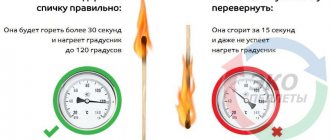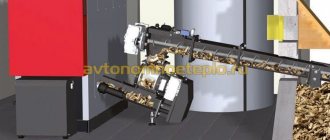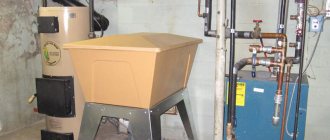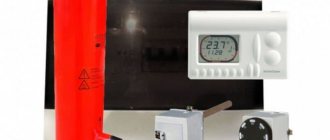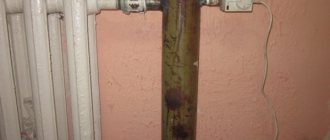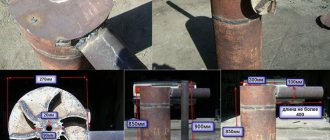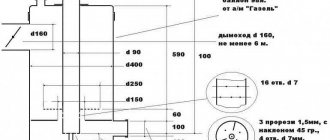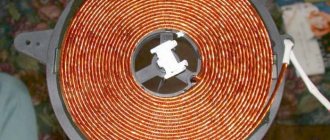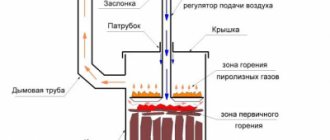How does the combustion duration of solid fuel increase?
The dream of many homeowners is to install a solid fuel boiler, to which they do not have to run with firewood every 4-6 hours. Taking advantage of this, manufacturers and sellers of heating equipment apply the prefix “burning duration” to all heat generators, including pellet ones, which operate independently for up to 7 days.
Varieties of classic boilers with an enlarged fuel chamber
The duration of the combustion process is usually justified by using the smoldering mode with a limited air supply. But burning wood and coal in this way is ineffective, and here’s why:
- Wood and coal boilers reach their efficiency of 70-75% during maximum combustion. When smoldering, the efficiency of the unit decreases to 40-50% (like a conventional potbelly stove).
- Smoldering firewood produces little heat energy. Who needs a “long-lasting” heat generator that does not fully heat the house?
- Freshly cut wood of certain species (for example, poplar, willow) and low-calorie fuel cannot be burned normally in smoldering mode.

Factory boiler with an enlarged firebox, where wood burns from top to bottom
In fact, long-burning solid fuel boilers are those that have an enlarged fuel chamber, only its size affects the duration of the process, all other things being equal. The principle is simple: the more wood in the firebox, the longer it burns and produces heat.
Household boilers that can operate for 8-12 hours on wood and up to 24 hours on coal from one start are of the following types:
- classic, with forced air supply;
- operating on the principle of top combustion (such as the Baltic “Stropuva”).
It is quite possible to make these designs of TT boilers at home if you have the necessary tools and practice in welding. You can also find drawings of mine boilers using solid fuel and sawdust on the Internet, but such heaters are quite bulky and difficult to manufacture, and therefore deserve a separate topic.
Long-burning boilers - add firewood twice a day!
This design will appeal to those who are not often at home or do not want to constantly load fuel. Long-burning units are a type of solid fuel boiler in which the combustion process (smoldering) occurs in the upper part of the fuel layer, respectively, and air is supplied from above. There is a built-in water circuit along the entire diameter of the housing, thanks to which the coolant warms up well no matter at what depth the combustion occurs. Due to the combustion of only the top layer, the boiler can operate for up to 30 hours on one load of wood, and some models that are suitable for any type of fuel can operate on coal for almost a week! Most boilers do not contain any energy-dependent equipment; moreover, they are relatively inexpensive and can be designed independently.
True, such designs also have disadvantages, in particular, it is impossible to add fuel while the boiler is burning. Wet firewood is not suitable for burning; it must be well dried to at least 20% humidity and cut into short pieces. If you heat with coal, then only high-quality coal with a low slag content. Another significant disadvantage is the limited capacity of the units. Most of the most popular models operate within 40 kW.
Let's also mention pellet boilers - this is a type of solid fuel boiler, with the only difference that instead of firewood or coal, fuel pellets from waste from the wood processing industry are used. Most units are equipped with a special hopper, from where fuel enters the combustion chamber automatically.
Classic long-burning boiler
In this section, we bring to your attention a homemade heating unit using wood and coal, designed and made by our expert Vitaly Dashko. The master assembled several dozen similar heat generators of varying power to order, constantly improving the design. For a brief overview of the TT boiler, watch the video:
The reliability and efficiency of boilers has already been time-tested at various facilities. The technical characteristics of the presented unit model are as follows:
- power – 22–24 kW;
- burning time (on average) with wood is 10-12 hours, minimum – 8 hours;
- the same, on coal - up to 1 day;
- Efficiency - 75-77%;
- maximum operating pressure in the heating system – 3 Bar, nominal – 1.5 Bar;
- the amount of water in the boiler tank is 50 l;
- product weight - 150 kg;
- loading opening size (width x height) 360 x 250 mm;
- total volume of the firebox - 112 l, useful volume (for loading fuel) - 83 l;
- firebox depth - 46 cm, optimal log length - 40 cm.
For reference. The master manufactures long-burning boilers of various powers; the line includes units of 16, 24, 36 and 130 kW. The price of a finished product for 24 kW when ordering from a specialist is about 450 USD. e. All questions and clarifications related to the design of a solid fuel boiler and its manufacture can be discussed personally with Vitaly, whose contacts are listed on the “Our Experts” page.
The design and overall dimensions of a long-burning wood-burning boiler for DIY production are shown in the drawing:

The heat generator operates successfully on both wood and coal fuel. The useful capacity of the firebox is calculated up to the lower edge of the loading opening, since it is undesirable to fill the chamber to the top. The boiler operates in the following order:
- After loading and igniting solid fuel, the doors are hermetically closed.
- The electronic control unit sets the desired coolant temperature; it is recommended not lower than 50 °C. Then the unit is put into operation by pressing the corresponding button, and the fan starts.
- When warming up to the set temperature, the fan turns off and air access to the firebox stops. The TT boiler is in standby mode, the wood smolders very weakly and produces virtually no heat.
- After the temperature in the boiler tank drops, the controller gives a command to start the fan and the combustion process in the furnace resumes.
The controller changes the fan performance at its discretion in order to achieve maximum combustion efficiency. There is no smoldering combustion in this homemade boiler; it is either in a standby state or burns wood and coal in an intensive mode.
The internal structure of the unit is shown in the sectional drawings of the boiler:
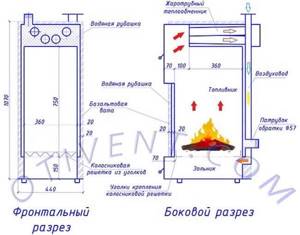
The heating installation implements the classic method of burning solid fuels with direct heat transfer to the walls of the water jacket and the vault, which is the bottom of the boiler tank. A fire tube heat exchanger is immersed in this tank, removing heat from the flue gases. The air heated in the channel is supplied to the firebox from below, through the grate. Burning duration is ensured by:
- Large firebox volume.
- Completely blocking the access of air to the firebox in standby mode. After the fan is turned off, the gravity damper is activated, closing the air duct and thus preventing the chimney draft from blowing up the coals.
The structure of the rear part and the fire tube heat exchanger is shown in the following drawing:
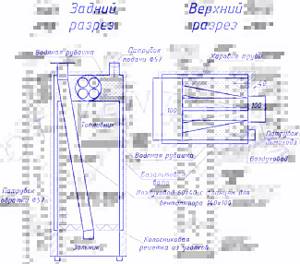
Tools and materials for manufacturing
The blanks for assembling a long-burning solid fuel boiler are usually made from low-carbon steel grades St 3, 10, 20. The best option is St 20; heat generators made from it last up to 15 years. Steel containing more carbon (St 35, 45) tends to heat up at high temperatures, and is therefore unsuitable for welding a heat generator.
If you have sufficient experience in welding and the opportunity to buy more expensive metal, then the combustion chamber can be made of heat-resistant steel alloyed with chromium and molybdenum (for example, 12ХМ, 12Х1МФ). How to independently determine the steel grade with sufficient approximation is described in this article.
The list of blanks from which you will assemble a solid fuel boiler with your own hands is given in the form of a table:

Advice. It is best to cut blanks using guillotine shears somewhere in a workshop. This will save you a lot of time on manual cutting and deburring.
Additionally you will need the following materials:
- equal angle angle 50 x 4 mm for making grate bars;
- pipe DN50 – for the heat exchanger and heating system connection pipes;
- pipe DN150 – to the chimney pipe;
- profile pipe 60 x 40 mm for the air channel;
- steel strip 20 x 3 mm;
- basalt insulation with a density of 100 kg/m³ and a thickness of 2 cm;
- smooth sheet metal 0.3-0.5 mm with polymer painting;
- ready-made door handles;
- cord, asbestos cardboard.
The principle of operation of solid fuel boilers and their design
Solid organic fuel is the most ancient source of energy for humanity. It is impossible to abandon it completely, even in the modern world. Moreover, in addition to firewood and coal, many other types of flammable solids have appeared today:
- peat briquettes – dried and compressed peat releases a lot of heat when burned;
- briquettes from wood processing waste - compressed sawdust, shavings and tree bark;
- birch charcoal - the same as for barbecue;
- recycled waste from landfills;
- fuel heating pellets are fine fuel obtained by pressing sawdust. Can be fed automatically;
- ordinary dry sawdust.
Various raw material options for use in solid fuel boilers
It is clear that all this fuel is obtained by processing various wastes, which solves the problem of recycling at enterprises and goes in line with the “green” economy.
Useful advice! The most affordable fuel listed above is sawdust. If you intend to use them for heating, make sure that they have a humidity level of less than 20%. Large values of this parameter will not allow the production of pyrolysis gas, since most of the heating energy will be used to dry the fuel.
As a result of human activity, a colossal amount of waste is generated that can be converted into high-energy fuel, which led to the appearance of long-burning solid fuel heating boilers on the market. Unlike conventional stoves, these units do not operate on the combustion of the fuel itself, but on its splitting as a result of heating. In the working chamber of such boilers, gaseous decomposition products of solid fuel burn. This operating scheme is several times more efficient than conventional combustion of fossil fuels. Pyrolysis gas releases a large amount of energy.
Operating principle of a long-burning solid fuel boiler
The design of such a gas generator installation is not very complicated. You can even build a long-burning solid fuel boiler with your own hands. The drawing of the simplest version looks like this:
- a closed cylindrical tank, which has a hatch for storing fuel, an ash pan and a hole for installing a chimney;
- An air distributor is located inside the tank, which creates a vortex of pyrolysis gas. It is attached to a movable telescopic tube. This whole piston-like structure presses on the fuel from above. Gas combustion occurs above the piston, and the fuel smolders below it;
- The heat exchanger is built into the upper chamber, where the maximum temperature is reached.
Slow smoldering of solid fuel occurs in the lower chamber. This is achieved by adjusting the air supply to the blower. The released gas burns intensely in the upper chamber and heats the coolant.
Diagram of a heating system for a private house using a solid fuel boiler
Useful advice! You should not use the simplest design to make a boiler that will heat a residential building on an ongoing basis. To do this, you need to either purchase a finished product, or make a more complex and reliable option.
Long-burning solid fuel boilers can be indispensable in private homes, utility buildings, garages and greenhouses. They will be especially beneficial where there is a large wood processing industry, since waste at such enterprises is given away almost free of charge. These units are also needed in areas where there are regular interruptions in gas supply. Such installations have many advantages, but there is also one important drawback - very high cost. That is why today it is important to make long-burning solid fuel boilers with your own hands. Drawings for this can be used of varying degrees of complexity. It depends on the skill level.
DIY water heating of a private house, design diagrams. Pros and cons. The difference between natural and forced water circulation.
Types of boilers
All existing solid fuel boilers can be divided into 3 groups:
There are a number of other classification features, but it is the principle of fuel combustion that is decisive when choosing a boiler.
Pyrolysis
In boilers of this type, the fuel burns slowly with minimal air access, due to which the amount of combustible gas increases and when it is re-combusted, the boiler efficiency increases to 85-90%. And although some believe that it is very difficult to make such a boiler with your own hands, we will tell you and, most importantly, show you how to make a long-burning pyrolysis solid fuel boiler with your own hands (see drawings below).
Photo 1 Diagram of a wood-fired pyrolysis boiler
Classical
Structurally, this is a standard wooden stove, where due to the smaller size of the combustion chamber, the fuel burns a little slower. As a rule, it is precisely these boilers that people prefer to make themselves. You will also learn how to make such a classic unit in the article.
Photo 2 Diagram of a classic long-burning boiler
The design of such boilers is notable not only for their ease of manufacture, but also for the ability to connect a second circuit to produce hot water simultaneously with heating.
These are the most efficient boilers, with efficiency levels approaching 95%. The main advantage is a fully automatic process, where pellets loaded into a hopper are poured into the combustion chamber via an auger. The complex design and automation make its independent production difficult.
Choosing the type of solid fuel boiler
How to understand which boiler will be optimal for servicing a particular heating system? Obviously, you need to decide on the type of fuel, the required power of the unit and the features of its design, installation process and subsequent operation, as well as the features of the connected heating system.
Among the materials that can be used as solid fuel, the most widely used are:
- coal;
- peat briquettes;
- pellets;
- firewood;
- sawdust and other combustible production waste.
Types of solid fuel for heating boilers in the photo
In order to increase the profitability and efficiency of the heating system, it is possible to manufacture a universal unit that can work with various types of fuel.
The choice of the type and design of the heating boiler directly depends on what fuel you are going to use, the required performance of the heating system, as well as the place where it will be installed. The following modifications of solid fuel heating units are suitable for self-production:
Equipped with a steel or cast iron heat exchanger, they can be used for both heating and hot water supply. The efficiency of such boilers is about 85%.
- Pyrolysis
They ensure separate combustion of fuel and the volatile gases released, thereby significantly increasing the efficiency and, consequently, the cost-effectiveness of the heating system.
- Pellet
The efficiency of this type of heating boiler reaches 90%. Their main advantage is the high degree of automation of work processes, and the disadvantage is the complexity of the design.
- Long burning
They are able to operate continuously throughout the entire heating season, requiring fuel loading once every few days, which distinguishes them from classic solid fuel boilers.
Step-by-step instructions for building a solid fuel boiler
So, the whole process of how to make a boiler with your own hands according to the drawings can be divided into several successive stages:
- Using a grinder, you need to cut blanks from pipes and profiles. The profiles will be racks; you need to cut round holes in them with a gas cutter for joining with the pipes. You will need to make 4 holes along the Ø50 mm pipe in the front pillars and the same number in the rear ones. In addition, we also need holes for inserting into the heating system. Sagging and deposits as a result of cutting or welding must be cleaned with a grinder so that they do not interfere with the movement of water through the pipes.
- Next, the blanks are assembled into a single structure. Two people will have to work - the welder will need an assistant to hold the tubes in a stationary position. To make it more convenient, you can place the racks with pipes on a flat surface and weld the front and back parts of the boiler.
- Now you need to ensure the supply and drainage of water from the boiler. The incoming and return pipes are welded to the finished frame, and the ends of the rectangular profiles are welded with pieces of metal 60x40 mm.
- Before installing the heat exchanger, it is checked for leaks. To do this, install it vertically, close the bottom hole and fill it with water. If there are no leaks at the seams, then you can continue working.
- The boiler body is built from brick and a heat exchanger is built into it, leaving a gap of at least 1 cm between them. The register must be installed in such a way as to create a rise towards the exiting hot water. The level difference between the outlet and the front right upper corner of the heat exchanger must be at least 1 cm. This will improve coolant circulation and eliminate air pockets.
- The brickwork should overlap the heat exchanger from above by 3-4 cm. A cast-iron slab is laid on top of the masonry. The chimney is installed at the discretion of the owners - brick, metal, or led into a ready-made pipe.
Rocket tube calculation
In addition to selecting the composition of the ceramic mixture, it is equally important to calculate the optimal dimensions of the rocket tube, because this directly affects the efficiency of the boiler. Having started the calculations, we remember that the entrance to the “J-pipe” is the bottleneck in the system. After it, all other sections should consistently increase by at least 2 cm.
Perelesnik
The only thing I did was to significantly increase the cross sections through which the hot gas passes along the walls of the heat exchanger. This slows down the flow rate.
Thus, the gas completely transfers its heat to the system, which increases the efficiency of the boiler.
To calculate the pipe dimensions, the user took as a basis the size of the pyrolysis gap for 20 kW boilers. Then, starting from this input parameter, he found the remaining dimensions of the pipe. As practice has shown, this approach has paid off.
For clarity, we present an approximate algorithm for calculating a rocket tube.
Let's take the data from the following table as a basis:
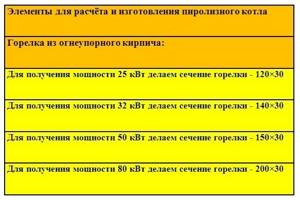
We take the first value from the table. For convenience, we convert the numbers from mm to cm. Find the area of the pipe entrance slit: 12x3 = 36. We get - 36 cm².
Further: the pipe must have a larger cross-section. Hence: if we take the internal diameter of the pipe to be 8 cm, then to find the area, we use the formula: S = πR^2, where R is the radius of the circle. We find the radius: 8/2 = 4 cm. We square the radius (to the second power), for which we multiply it by ourselves. We get: 4x4 = 16 cm. Multiply the result by the number “Pi”: 16x3.14 (rounded) = 50 cm².
If we divide 50/36, then, rounding the resulting value to 1.38, we arrive at the required ratio of the inlet area: 1.3-1.5.
Knowing the diameter of the pipe, we calculate the outer diameter of the model for casting the mold. Inner diameter – 80 mm. We add walls 10 mm thick. We get - 100 mm. We take into account that a ceramic product can shrink by 10-15%. Total: the outer diameter of the model is 110-115 mm.
The length of the vertical part of the “J-tube” is given in the American textbook on the construction of rocket furnaces, which was mentioned in the first part of the material. It is equal to 0.8-1 m. This size was obtained experimentally, maintaining it, we obtain a workable system.
The length of the horizontal section of the pipe should be less than half the length of the vertical section, i.e. less than 0.5 m. For the author of the boiler, this value is 0.3 m. You should also not make the horizontal section too short, because gases, before entering the vertical, “accelerating” part of the pipe, must warm up properly. Don't forget about thermal insulation of a short section. This will reduce heat loss and create all the conditions for afterburning gases. In order to supply secondary air to the lower part of the vertical pipe, the user added a nozzle to the design.
How to increase boiler performance
A self-assembled solid fuel boiler, as a rule, is characterized by significant heat losses associated with the loss of heat into the chimney. Moreover, the straighter and higher the chimney, the more heat is lost. The way out in this case would be to create a so-called heating panel, that is, a curved chimney that allows more thermal energy to be transferred to the brickwork. The brick, in turn, will give off heat to the air in the room, heating it. Often such passages are arranged in the walls between rooms. However, this approach is only feasible if the boiler is located in the basement or on the ground floor, or if a bulky multi-stage chimney is built.
Alternatively, you can increase the efficiency of the boiler by installing a water heater around the chimney. In this case, the heat of the flue gases will heat the walls of the chimney and be transferred to the water. For these purposes, the chimney can be made from a thinner pipe, which is built into a pipe of a larger cross-section.
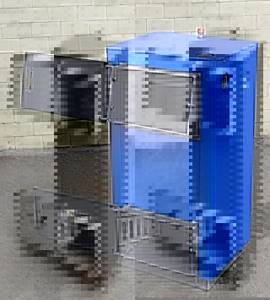
The most effective way to increase the efficiency of a solid fuel boiler is to install a circulation pump that forcibly pumps water. This will increase the productivity of the installation by approximately 20-30%.
Of course, the boiler must be designed so that the coolant can circulate independently if the electricity in the house is turned off. And if it is available, the pump will speed up the heating of the house to comfortable temperatures.
Preparing the boiler room for installation of the unit
Solid fuel boilers with an open combustion chamber must be placed in separate special rooms - boiler rooms. Such rooms are arranged in the basement or in the basement, equipping them with an intensive ventilation system to ensure normal operation of the solid fuel unit.
Boilers that consume solid fuel can be installed manually, and without any coordination with the relevant services. However, during the installation of a solid fuel boiler, a set of rules must be followed.
So, the floor at the installation site of the solid fuel boiler should be made perfectly flat and durable. In most cases, boilers are installed on special plates made of non-combustible materials.
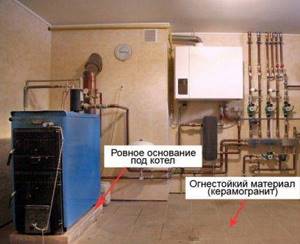
In some cases, the boiler is placed on a flat base made of concrete screed with a thickness of 50 mm or more
The boiler should be installed at some distance from the walls. The gap between the rear wall of the boiler and the room wall must be at least 60 cm, while the distance between the boiler room wall and the front surface of the boiler must be at least 25 cm.
Before installing the heating unit, the walls and floor of the boiler room must be covered with fire-fighting material with a minimum fire resistance limit of 0.75 hours. For these purposes, the following can be used: sheets of metal, basalt cardboard, mineralite or asbestos cement.
Also, the boiler room must be equipped with a low-flow ventilation system. This could be a regular window, or a hole made in the wall. In this case, its area is calculated based on the boiler power: per 1 kilowatt of boiler power there should be 8 square centimeters of the ventilation opening.
In the case where the boiler room is equipped only with lighting, it is worth installing sockets powered by a 220 V power supply.

If the boiler is located at a distance of less than 38 centimeters from the wall, it is sufficient to insulate this wall with a sheet of fire-resistant material
It is worth covering the floor directly at the boiler installation site with a heat-resistant sheet so that the protective material protrudes forward 80 cm from the front wall of the boiler. This measure will help prevent a fire in the event of heat loss from the firebox.
All manufacturers of heating units in the installation instructions for their products recommend building a foundation for installing a boiler on it. So, if the boiler is of low power, the weight of which does not exceed 200 kg, it can be installed on a base made of cement screed with peace of mind. If properly installed, it can withstand this kind of load without any problems.
But for the installation of a unit whose weight exceeds 300 kg, it is advisable to build a base of reinforced concrete screed. Moreover, its thickness should be from 10 to 12 cm. If the weight of the boiler exceeds 300 kg, then it must be installed exclusively on a base consisting of a separate foundation slab.

Installation of pellet boilers with an electric motor and a pellet auger is carried out on a specially poured foundation in order to minimize the influence of vibration load on the foundation underneath them
Solid fuel boilers are allowed to be installed on wooden floors. However, to begin with, you will have to prepare the installation site yourself, having previously reinforced it with timber-shaped logs, the cross-section of which is at least 100x50 mm.
If it is planned to install additional heavy equipment in the boiler room, then pouring a foundation for each unit is impractical. In this case, it is much easier to fill the so-called industrial floors, that is, make a concrete screed to a height of 12 cm.
In this case, its filling should be reinforcement with a diameter of 8 to 14 mm. Then you need to make a dense cushion of crushed stone, and put a mesh on top with a window size of 20x20 cm.
Based on how the boiler is connected to the chimney: through the roof or through the wall, it is necessary to design the location of the hole through which the chimney pipe will be led out and make it. In this case, its internal diameter should coincide with the diameter of the outlet neck of the solid fuel unit or be slightly larger.
Step-by-step production of a solid fuel boiler. Subtleties and nuances
You will not be able to make the most economical homemade solid fuel boiler, but you can create a heating apparatus that is quite suitable for heating and hot water supply. The fact is that the assembly of industrial products is carried out on high-precision industrial equipment from specially selected materials in compliance with technological parameters. Each factory boiler model is based on accurate thermal calculations. The possibilities of working at home are incomparably more modest than in industrial conditions, therefore, when choosing a model to be manufactured, one must proceed from existing realities, including one’s personal potential as an installer.
Tools and materials
Having a drawing and specification of the heating unit, you can determine the list of necessary tools. Whether you want to make a large boiler or plan to assemble a small solid fuel heating device for your dacha with your own hands, the list of accessories will be approximately the same.
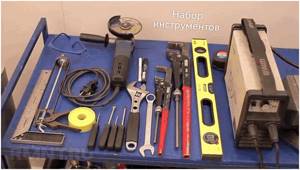
Tool kit for self-production of a solid fuel heating unit
To work you will need the following tools and accessories:
- welding machine;
- small grinder with cutting and grinding discs (safety glasses);
- electric drill with metal drills;
- gas keys No. 1, 2;
- hammer;
- a set of open-end or ring wrenches and screwdrivers;
- pliers;
- 90 degree square
The main material in production is steel, the thickness of which for the boiler must be at least 5 mm, for grates - from 7 mm.
In addition, you will need:
- steel corner 50x50 - for the boiler frame;
- sheet stainless steel - if there is a storage tank in the design;
- thick-walled steel pipes with a diameter of 32-50 mm - for the manufacture of a coil heat exchanger.
A complete list of materials and their consumption is prepared in advance on the basis of technical drawings.
Manufacturing of the housing and heat exchanger
The boiler body, which often acts as a combustion chamber, is the basis of the entire structure. To reduce the deformation of the walls under the influence of high temperature, the enclosing structures of the firebox are made in two layers with a backfill between the layers of dry sifted sand, which plays the role of a geometry fixator. The outer and inner shells of the firebox are made of frames, which also increases the rigidity of the structure. In addition, to increase the strength of the combustion chamber wall, the outside can be sheathed with a steel angle or profile in the form of stiffening ribs.
Case manufacturing
The body is made of sheet heat-resistant steel with a thickness of at least 5 mm. Before work, the material is cleaned of rust using an angle grinder. Parts are marked and cut. Angle grinder is also used.
The stages of manufacturing the case are shown in the photographs.
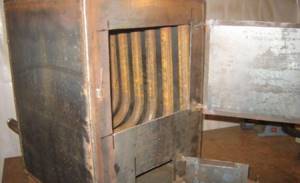
Firebox
Holes for firebox, blower
The holes are pre-marked on the front part of the housing. They are cut through by an abrasive wheel of an angle grinder. The edge is additionally processed - sharp edges and burrs are unacceptable (will lead to injury).
Holes for pipes
Through the upper and lower pipes there is an outflow of hot water and an influx of cold water from the heating system. For pipes, it is recommended to use sections of seamless pipe with a diameter of at least 50 mm. Smaller sizes create too much resistance to water flow and lead to boiling in the boiler when the radiators are not warmed up. Holes are cut with a welding machine, drill, chisel, sledgehammer (the method is described in detail below). The edges need to be smoothed with a file and the pipe welded.
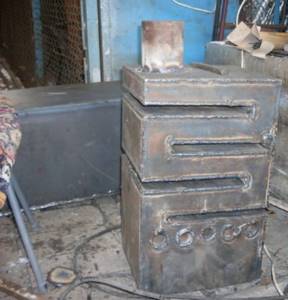
Boiler assembly - smoke circulation, water pipe system (without water jacket)
Useful tips for making a TT boiler
- If you want to make a TT boiler universal in terms of the use of raw materials, then use a pipe made of heat-resistant alloy steel for the combustion chamber.

Alloy Steel Pipe for Boiler
You can significantly reduce the cost of building a unit if you take a seamless steel pipe of grade 20.
- Before installing the boiler in the place designated for this unit, carry out the first kindling outside, equipping the boiler with a temporary chimney. This way you will be convinced of the reliability of the design and will see whether the case has been assembled correctly.
- If you use a gas cylinder as the main chamber, then keep in mind that such a unit will provide you with combustion for 10-12 hours due to the small amount of fuel supplied. So, the small volume of the propane tank will decrease after cutting off the lid and ash pan. To increase the volume and ensure longer burning time, it is necessary to use two cylinders. Then the volume of the combustion chamber will definitely be enough to heat a large room, and there will be no need to add firewood every 4-5 hours.
- In order for the ash pan door to close tightly, preventing air from entering, it must be well sealed. To do this, lay an asbestos cord around the perimeter of the door.
Asbestos cordIf you make an additional door in the boiler, which allows you to “reload” fuel without removing the lid, it also needs to be tightly sealed using an asbestos cord.
For the operation of a TT boiler, the diagram of which we attach below, any solid fuel is suitable:
- hard and brown coal;
- anthracite;
- firewood;
- wood pellets;
- briquettes;
- sawdust;
- slates with peat.
There are no specific instructions on the quality of fuel - any will do. But keep in mind that with high fuel moisture, the boiler will not provide a high efficiency.
Self-production
It is quite difficult to construct a heating boiler with your own hands. The slightest inaccuracy and it will not work correctly, which can lead to tragedy. Therefore, it is necessary to carefully study the technology of their manufacture and carry out all activities very efficiently.
Shaft-type heating devices
You can create a mine or pyrolysis boiler yourself. The first operates not only on wood, but also on coal, peat or sawdust. You can immediately load up to 50 kg of firewood into its chamber.
When the chamber is fully loaded with fuel and high power, such a device will work continuously for up to 5 hours, at the lowest power (15-20 kW) - up to a day. Its efficiency is 75%. The power of such models can be adjusted automatically.
Pyrolysis model
Yellow or colorless wood gas, released under high temperature, is the heat source in the pyrolysis boiler. For such a heating device, you can only use completely dried firewood, otherwise it will not start. The pyrolysis design can also operate on pellets. Their automatic feeding into the furnace (using special augers) will be an additional advantage of the boiler. The operating time of a model of this type when fully loaded is 12 hours.
Disadvantages - high cost (you can reduce it if you make it yourself), energy dependence (the fan runs using electricity), large size. To make such a device you need:
- pipe and sheet of steel 4 mm thick;
- professional pipes, metal rods with a cross-section of 2 cm;
- electrodes;
- fan;
- fire bricks;
- automatic temperature controller;
- fasteners.
They first draw up a diagram of the future boiler with all the calculations. The most successful design of a homemade boiler in this regard, developed by engineer Belyaev, is taken as a basis. Adjustments are made to it according to the wishes of the home owner. For example, heating can be made more efficient by increasing the volume of the heat exchanger jacket.
Homemade pyrolysis devices must be installed on fireclay brick platforms specially equipped for them. After this, they are connected to the water circuit.
During the first test switch-on, they find out whether there were any errors in the boiler design. If everything was done correctly, the device can quickly switch to gas generator mode. The room will become much warmer within half an hour.
Tools and materials
A wood heating device is the safest design. Its autonomy, ease of operation, minimal risk of explosion, and the possibility of self-production are its main advantages. Its disadvantage is the regularity of adding fuel.
Homemade wood-burning boiler models can be made from the following materials and parts:
- metal barrel (volume – 200 l);
- steel sheet 3-5 mm thick (to create a firebox);
- metal pipe with a diameter of 20 mm and a wall thickness of 3 mm;
- L-shaped pipe (diameter – 20 mm);
- grate;
- doors for the vent and firebox.
Homemade models of wood-burning boilers are made using gas welding equipment and an angle grinder.
Sequence of work
Before starting work, you must carefully consider the design of the device, purchase all the necessary materials and tools.
Cut 3 circles (diameter of each 57 cm): this is the bottom, the top cover and the partition between the ash pit and the firebox. Make a hole with a diameter of 20 mm in two of them.
A strip 400 mm wide and 3600 mm long was cut from a sheet of steel, holes were cut in it for the firebox door, and below it for the ash pan. Weld the sheet together into a circle.
Weld a circle with a hole on top and without one on the bottom. Install a partition with a grate between them.
Weld the pipe and the barrel together according to the “one inside the other” principle. Install a firebox with a blower underneath. Connect all elements by welding.
Attach an L-shaped piece of pipe to the top of the barrel: it will connect the heating container and the chimney. When water heats up in a barrel, it forms steam, which will freely escape into the chimney, thereby preventing the pressure in the boiler from increasing.
Install pipes at the top and bottom for cold water inlet and hot water outlet.
Hang the doors on the firebox and vent.
Install the structure on a foundation made of refractory bricks.
Such a device heats using firewood, pellets or peat, tightly packed inside the firebox.
Even the simplest model of a wood-burning boiler requires care and attention when making it yourself
Security measures!
In order for such a boiler to truly be an effective and economical heating option, to serve for a long time and not cause burns or accidents in the house, take into account the main points of fire safety.

TT boiler
- It is necessary to monitor the temperature in the system and prevent it from overheating.
- Do not install a shut-off valve on the pipeline.
- Do not keep flammable objects near the boiler.
- It is necessary to monitor the ventilation in the room.
- A separate room must be equipped for the boiler.
At the preparatory stage, consider the place where the boiler will be installed.
Ideally, of course, to equip a separate boiler room, because the operation of a long-burning TT boiler is somewhat different from the usual wood-burning brick stove. And externally, this unit will not be pleasing to the eye or serve as a decoration for the house.
Considering that solid fuel does create a certain amount of dirt, it is better to install a long-burning TT boiler in a non-residential area.
But if its power is small (does not exceed 30-35 kW), then you can simply separate (zone) the main room from the “boiler room” using a brick wall.
Be sure to provide a ventilation system in the room where this boiler will be used. Oxygen must be supplied from the street on a constant basis.
Principle of operation
After loading and igniting the fuel, the flap is tightly closed. The fan pumps in oxygen, which stimulates the combustion process. When the set temperature is reached, the air flow stops. A minimal amount of oxygen passes through the natural ventilation system, which supports the smoldering process and prevents coal or firewood from extinguishing.
The sensors react to a decrease in temperature during cooling and, if necessary, send a signal to the automation to start the fan. The process is repeated.
In a homemade heater, the oxygen supply is manually regulated using a damper.
How to increase efficiency
A homemade device, with all its advantages, still cannot be compared with a factory device.
But every master can increase the efficiency of his brainchild by following these useful tips:
- install a spare heat shield above the boiler;
- install a reserve tank of water so that it is heated by the heat of combustion products;
- make a gas exhaust pipe at least 7 meters long;
- install a circulation pump - it will increase the efficiency of the entire system by at least 20%. Brick stove with oven read on our website.
Circulation pump prices
circulation pump
Types and materials
A household device for autonomous water heating can be of several types (depending on the body material):
- cast iron;
- steel.
Solid fuel boilers made of cast iron are more durable. Naturally, prices for them will be higher than for steel ones. At the same time, cast iron is a fairly heavy material, which reduces the ease of transportation of the device. However, temperature resistance and strength make it indispensable even in the manufacture of some parts of steel boilers. For example, a heat exchanger is often made of this metal. Such boilers use a special piping that increases the temperature of the return coolant.

Cast iron solid fuel boiler
Steel boilers are a good solution for alternative water heating. If your home uses electricity or gas for its main heating, steel products are a good backup option. Their prices are lower, they themselves are compact and easy to use. And the installation of a solid fuel boiler can be done with your own hands.

Steel solid fuel boiler
There are also double-circuit and single-circuit solid fuel boilers for home use. They are distinguished by the presence of an additional circuit (coolant). And if their body is similar, then diagrams and drawings will help distinguish them from each other.
The cost of dual-circuit units will depend on such factors
- type of solid fuel;
- device power;
- control and management systems.
Boilers are also classified according to the method of fuel combustion. The following types are distinguished based on this characteristic:
1. Appliances with natural draft - solid fuel boilers in which air is taken from the room. The combustion process in them is controlled by a special thermostatic traction regulator.

Solid fuel boiler with natural draft
2. Pyrolysis - boilers with several chambers. In the first, fuel combustion occurs, and in the second, the flammable gas produced during the combustion of the fuel is ignited. This is an effective way of working.
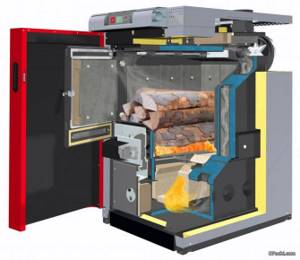
Solid fuel pyrolysis boiler
3. With additional draft – industrial and household devices with a built-in fan that provides additional air intake.
How to make an electric boiler?
The main element of an electric heating unit is a thermoelectric heater (TEH) - it is necessary to convert electricity into heat. The body of the electric boiler can be made of any material, and the components necessary for its operation - regulators, sensors, etc. - can be purchased at any specialized store.
Electric heating boiler design
Structurally, the electric boiler consists of:
- heating element;
- expansion tank;
- circulation pump;
- safety valve;
- filtration unit.
Operating principle of an electric heating boiler
The coolant in the system can circulate either naturally, for which it is necessary to provide a height difference between the radiators and the boiler tank, or forcedly using a pump. The simplest option for an electric boiler is to install a heating element directly into the heating system. If this design is not suitable, you can design an electric boiler with a removable pipe - this will make it possible to quickly get to the heating element if repair or replacement is necessary.
The optimal solution for heating, say, a small cottage is a small, separately located electric boiler. The pipe of such a boiler will have a diameter of about 220 mm, and the body length will be no more than half a meter, which allows it to be installed almost anywhere, of course, taking into account safety rules.
The body of the electric boiler must be sealed. It is equipped with a hole for the heated coolant to enter the heating system, as well as a pipe for the return supply of cooled water.
DIY heating boiler assembly guide
Outwardly, the simplest sawdust boiler is similar to the famous potbelly stove. However, the design of the unit, as well as the efficiency of its operation, differs in many respects from the mentioned furnace.
Boiler assembly kit
- Before starting work, prepare all the necessary accessories. You will need:
- container for loading raw materials (metal tank);
- sheet steel 3 mm and 5 mm thick;
- welding machine;
- bricks;
- cement-based masonry mortar;
- Bulgarian;
- round pipes with a diameter of 4 and 5 cm;
- rectangular pipes measuring 6x4 cm.
Making a boiler

Furnace diagram
There is nothing complicated about making a sawdust boiler yourself. All you need to do is follow each step of the following guide one by one.
Boiler assembly
First step. Make two cylinders from sheet steel. The diameter of one product should be slightly smaller than the other. You will insert the smaller cylinder into a larger container and secure the lid on top.
Double walls
To make the lid, use sheet steel. Make a hole in the lid and weld the blower pipe to it. Weld the bottom at the bottom of the structure. Make the lid and bottom from thicker material than the cylinders.
Second step. Prepare the pipes for installation in the boiler body. Select pipes of such sizes that the products fit easily and at the same time tightly into each other - this will make it easier for you to assemble the structure.
Rectangular pipes are installed vertically, round ones fit into rectangular ones. First make holes in the rectangular pipes that match the diameter of the round pipes.
Pipes for supplying and discharging water will be connected to the boiler. Therefore, at the same stage you need to cut 2 holes of 20 mm in diameter in the walls of the boiler.
Third step. Start welding the pipes in accordance with the boiler diagram. Be careful, try to weld all elements without gaps. Weld the water pipes last. Weld the open ends of the pipes hermetically with small steel plates.
Fourth step. Check the boiler for leaks. To do this, pour water into the pipes. If leaks are found, immediately seal the leaking areas.
Fifth step. Mount the assembled boiler into the pre-prepared frame. The frame can be an ordinary box made of brick. It is better to lay out such a frame in advance in the place chosen for this.
After installation, place the vent cover in its proper place and connect the flue pipe to the boiler.
Boiler connection
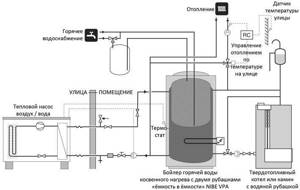
Solid fuel boiler connection diagram
Connect the finished unit to the heating system. Install a device called a register at the chimney outlet of the heating boiler. Through it the boiler is connected to the central heating. You can connect the return and supply to the register. This is just one of the most popular connection methods. If desired, you can connect the boiler using other circuits. The main thing is that the finished system works as efficiently and safely as possible.
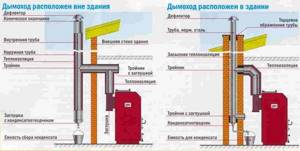
How to make the right chimney
A highly efficient register allows you to further increase the efficiency of the boiler. The smaller the distance between the register and the boiler, the more efficient the system will work.

